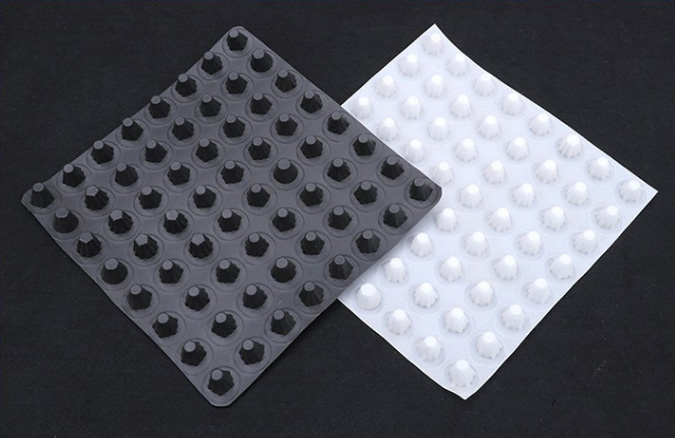Laying process of plastic drainage board
1. Clean up the garbage on the laying site and level the cement so that there are no obvious bumps on the site. The roof of the outdoor garage and the roof garden need to have a slope of 2-5‰.
2. Roof greening and outdoor garage roof greening can be used with porous water pipes, so that the water discharged from the drainage board can be discharged to the nearby sewer pipes or nearby urban sewers.
3. The basement ground is anti-seepage, and the floor is raised above the foundation, that is, a layer of drainage board is made before the floor is made. The round protruding platform is downward, and there are blind ditches around it, so that the groundwater cannot come up, and seepage water naturally passes through The space of the drainage board flows into the surrounding blind ditches, and then flows into the sump through the blind ditches.
4. To prevent water seepage on the inner wall of the basement, a drainage board can be laid on the main wall of the building, the round protruding table faces the main wall, and a layer of single wall is built outside the drainage board or steel mesh powder cement is used to protect the drainage board, so that the drainage board can be protected. The space of the seepage board outside the wall flows straight down into the blind ditch to the sump.
5. When laying drainage boards in any section, care must be taken not to let dirt, cement, yellow sand and other garbage enter the front space of the drainage board to ensure that the space of the drainage board is unobstructed.
6. Take protective measures as much as possible when laying the drainage board. When laying the drainage board on the floor or in the outdoor garage, the backfill should be done as soon as possible to prevent the strong wind from blowing the drainage board and affecting the laying quality. layer to prevent the drainage board from being damaged by people or objects.
7. The backfill is cohesive soil. It is ideal to lay 3-5 cm of yellow sand on the geotextile, which is beneficial to the water filtration of the geotextile; if the backfill is a nutrient soil or light soil, there is no need to lay another layer. Layer of yellow sand, the soil itself is very loose and easy to filter water.
8. When laying the drainage board, the next 1-2 fulcrums are placed on the side and the right side, or the two bottom plates can be aligned, and the top is overlapped with geotextiles. As long as no soil enters the drainage channel of the drainage board, it is enough to keep the drainage smooth. .
Post time: Sep-26-2022

